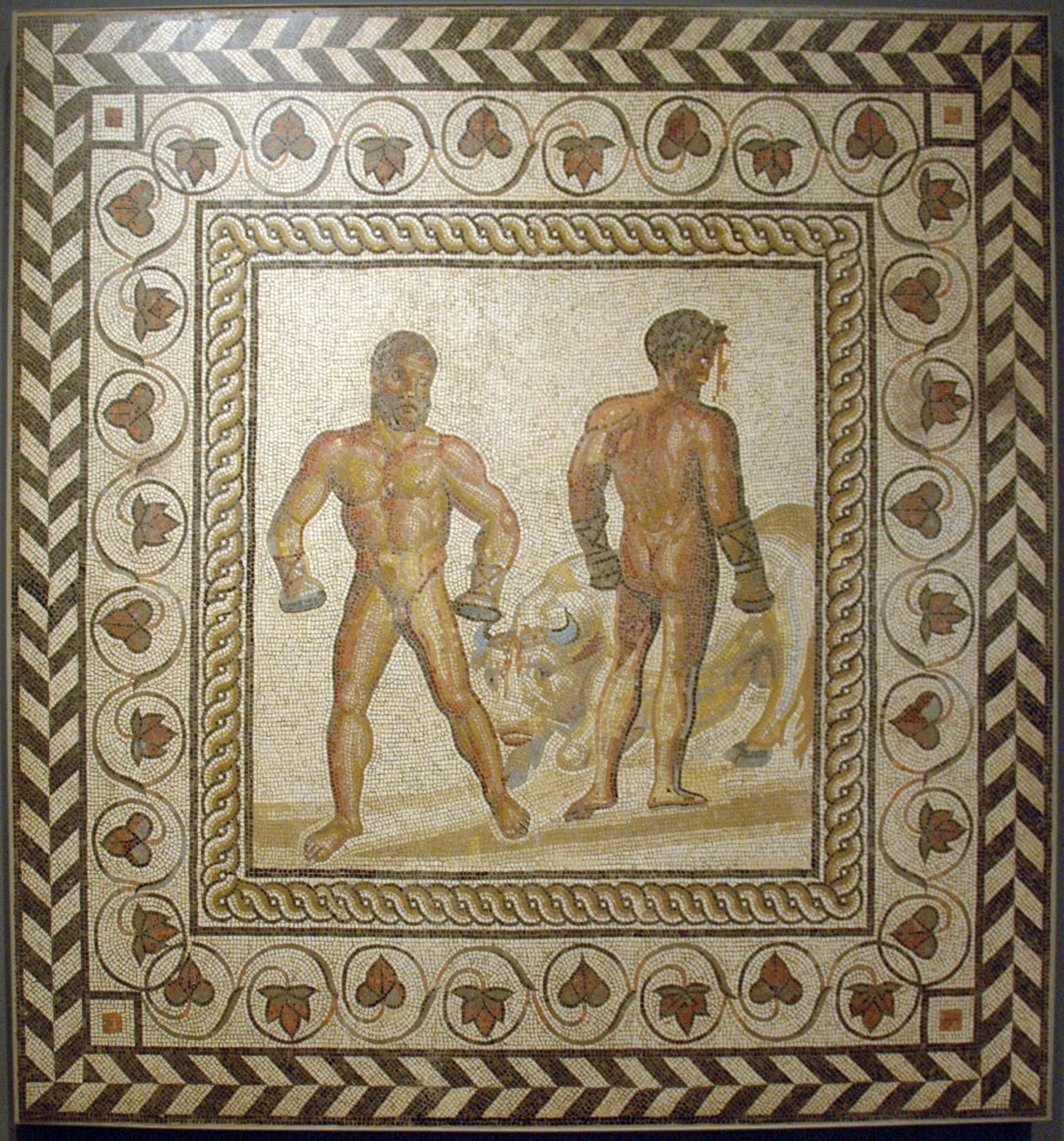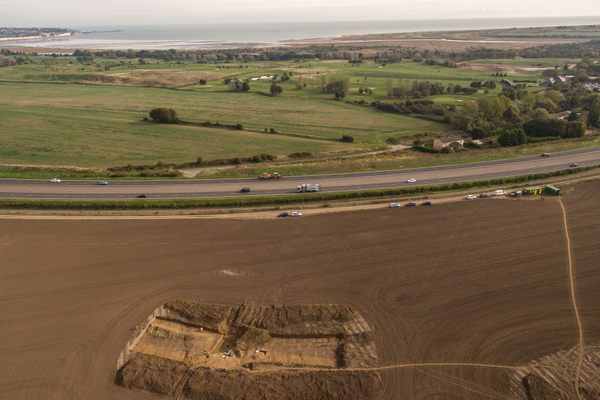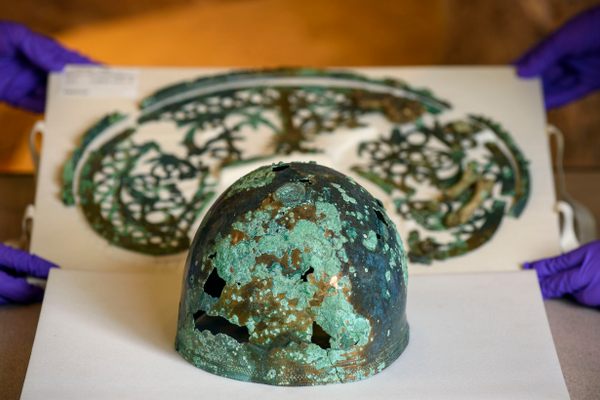Found: A Pair of Boxing Gloves From 2,000 Years Ago
The leather items are considered to be the only surviving examples from the Roman era.

We know that the Romans liked boxing. Roman Emperor Augusts used to love watching matches, whether fought among professionals or street fighters, and he famously exiled the actor Pylades after he disrupted a match by giving the finger to a fellow spectator. Despite this popularity, it is rare to encounter boxing artifacts when digging around Roman sites, as boxing gear was mostly made of perishable materials, such as leather and wool. That’s what makes the recent discovery of a pair of boxing gloves so notable.
In the summer of 2017, a team of archaeologists led by Dr. Andrew Birley, Director of Excavations at U.K. heritage charity The Vindolanda Trust, was digging in the ground at Vindolanda, a former Roman fort near Hadrian’s Wall in northern England, when they unearthed what are considered the only surviving examples of boxing gloves from the Roman era.
As The Guardian notes, the two leather items are more like padded bands than actual gloves and are not part of a matching pair. The bigger one was cut out from a single piece of leather and was filled with an organic material that could protect the boxer’s knuckles. On the outside it was covered by leather, which showed signs of wear and tear. The smaller glove was filled with twisted leather fiber and was marked by the shape of the wearer’s knuckles.
The fact that the items did not contain metal, which was usually fitted into the gloves of professional boxers, suggests that they were used during training rather than in official boxing matches.


Sparring was a common training practice among Roman army troops and many soldiers enjoyed gambling on informal boxing matches set up among fellow servicemen. But the sport dates to well before the Roman era. The earliest depictions of a boxing-like activity date to the Bronze Age, during the Minoan and Mycenaean periods, about 2600 to 1100 B.C. By 688 B.C. the Greeks included boxing in the list of official Olympic disciplines.
“I have seen representations of Roman boxing gloves depicted on bronze statues, paintings, and sculptures, but to have the privilege of finding two real leather examples is exceptionally special,” Dr. Birley said in a release.
Other notable finds unearthed at Vindolanda include some rare swords, copper horse gear, writing tablets, bath clogs, and leather shoes. The site is unusually rich in ancient organic artifacts as a result of oxygen-free patches in the soil. “There is no oxygen in the soil and therefore no erosion of what has been left,” says Sonya Galloway from the The Vindolanda Trust. “We find objects in almost perfect condition, just as they were left nearly 2,000 years ago.”














Follow us on Twitter to get the latest on the world's hidden wonders.
Like us on Facebook to get the latest on the world's hidden wonders.
Follow us on Twitter Like us on Facebook